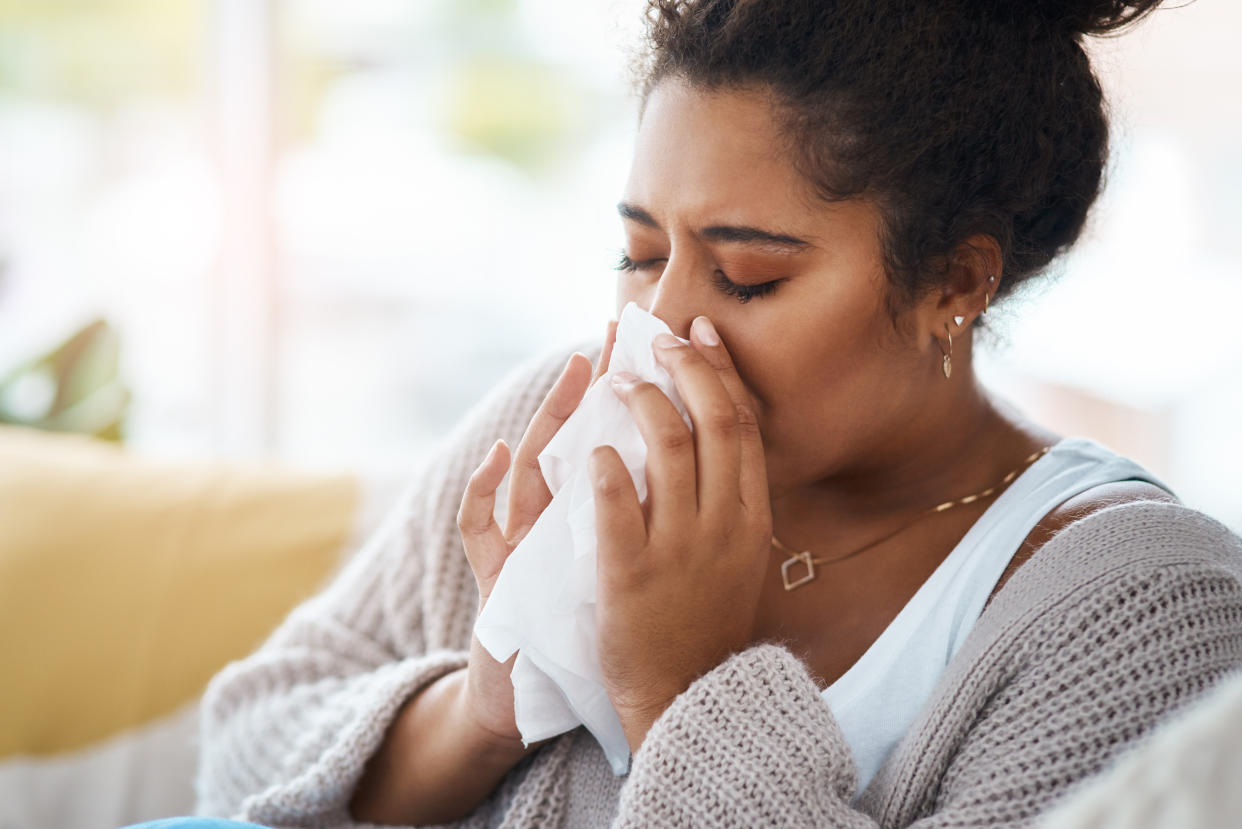You’re sick. Is it RSV, a cold, COVID or the flu? Here’s how to tell the difference.

With cases of the flu, RSV, COVID-19 and the common cold at high levels across the country right now, it seems like everyone is getting sick. Still, the symptoms of these illnesses can overlap, making it hard to tell at first glance what you've got.
Doctors say that the best way to know what you're dealing with is to get tested. But if you want a general idea of what might be behind your congestion and misery, a few signs can indicate you're dealing with one virus over another.
First, it's important to cover the symptoms of each illness
There is a lot of overlap between these infections, making it tough for even doctors to figure out what you have, Dr. Thomas Russo, professor and expert in infectious diseases at the University of Buffalo in Buffalo, N.Y., tells Yahoo Life. Here's a breakdown of each:
Flu symptoms
These are the main symptoms of the flu, according to the Centers for Disease Control and Prevention (CDC):
Fever/feeling feverish or having chills
Cough
Sore throat
Runny or stuffy nose
Muscle or body aches
Headaches
Fatigue
Vomiting and diarrhea (more common in children than adults)
COVID-19 symptoms
If you have COVID-19, the CDC says you're likely to experience these symptoms:
Fever or chills
Cough
Shortness of breath or difficulty breathing
Fatigue
Muscle or body aches
Headache
New loss of taste or smell
Sore throat
Congestion or runny nose
Nausea or vomiting
Diarrhea
RSV symptoms
People with RSV may have these symptoms, according to the CDC:
Runny nose
Decrease in appetite
Coughing
Sneezing
Fever
Wheezing
Common cold symptoms
These signs can be a tip-off that you have the common cold, the CDC says:
Sneezing
Stuffy nose
Runny nose
Sore throat
Coughing
Mucus dripping down your throat
Watery eyes
Fever (this isn't common, but can happen)
So how can you tell these illnesses apart?
The best way to know for sure is to get tested. "The differences are all very marginal," Dr. Patrick Jackson, an infectious disease physician at UVA Health, tells Yahoo Life. Still, doctors can pick up on small clues to give them a hunch on what you're struggling with.
"Both COVID-19 and influenza can be mild or give you a more severe illness. But certainly, if you feel very fatigued and tired and want to take to your bed, that will make you think of the flu," Dr. William Schaffner, an infectious disease specialist and professor at the Vanderbilt University School of Medicine, tells Yahoo Life. "I would put COVID right next to that, but it's not going to be the common cold."
How quickly you get sick is another telltale sign. For example, colds tend to come on gradually, while Russo says that the flu "sometimes has a sense of coming on suddenly." So if you feel like you got intensely sick out of nowhere, it could be the flu.
It can be harder to distinguish between the common cold and RSV, but how the illness affects your breathing can be a clue. "A cold might start with a scratchy throat, followed by a runny nose, but RSV can do the same thing," Russo says. However, "frequent wheezing is a bit of a telltale sign for RSV."
Where your symptoms are located is another sign. The common cold is "usually limited to above the neck," Schaffner says. Meaning, you're more likely to deal with a sore throat, stuffy nose and runny eyes with the common cold. But COVID-19 can mimic a cold at first, he says. "The loss of taste and smell was more common with COVID in the beginning of the pandemic than it is now," Russo notes.
Another good way to know what you have, aside from getting tested, is to think about your exposures, notes Russo. "If you happen to live in a household with multiple people and one person gets sick and then you get sick, it's fair to assume that you have what they have," he says.
What to do if you get sick
If you get sick right now, it's easy to think it doesn't matter what's behind your illness — you're just feeling lousy and that's that. But getting tested can reveal what's going on with you, as well as help steer doctors toward the appropriate treatment that could help you recover faster, Russo explains.
"Definitely if you are in a high-risk group — you're older, have an underlying chronic condition, are pregnant or are immune compromised — contact your health care provider and get a test," Schaffner says. "We can treat flu with oseltamivir [Tamiflu], we can treat COVID with medications such as nirmatrelvir/ritonavir [Paxlovid]. These help reduce the duration of the illness and make it so the illness doesn't get more severe and you have to be hospitalized."
Worth noting: You have only a short window of time to get on Tamiflu or Paxlovid. "Using antiviral drugs to prevent illness really only works in the initial stages of infection," Jackson says. "If you don't interrupt viral replication in the early stages, you don't get much benefit. The farther out you get from the onset of symptoms, the less effective they are."
At the end of the day, says Russo, "it comes down to testing. Start with COVID and then call your doctor about a flu test if it's negative." Your medical provider should be able to take things from there.
